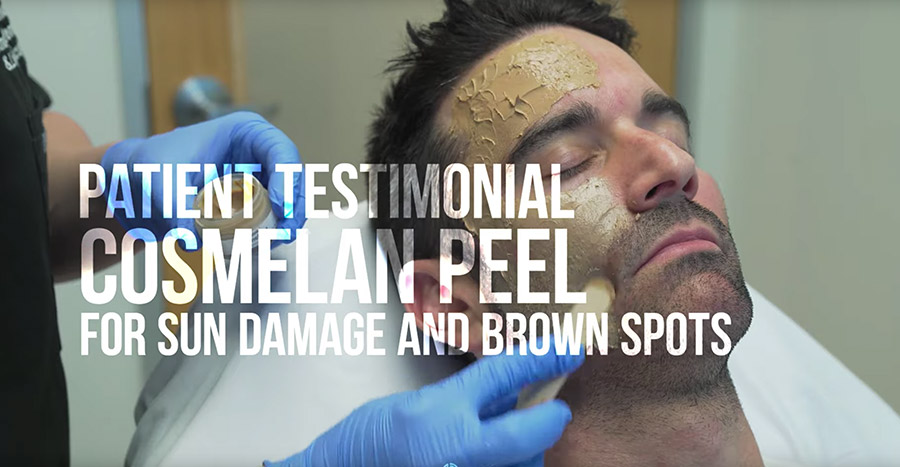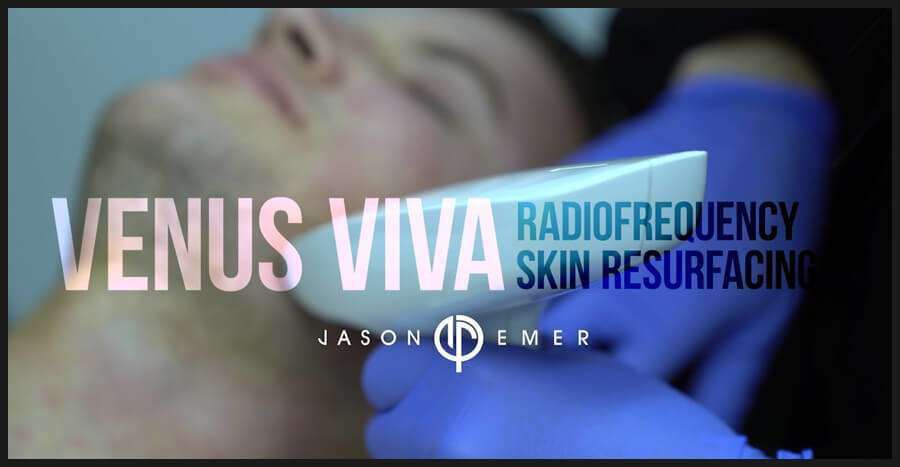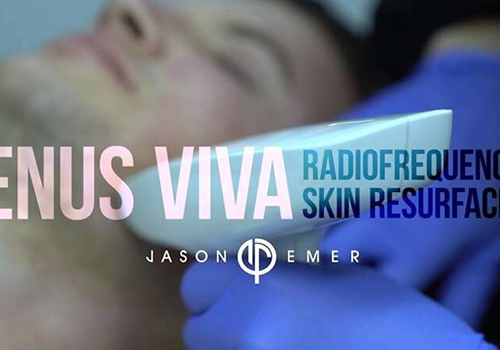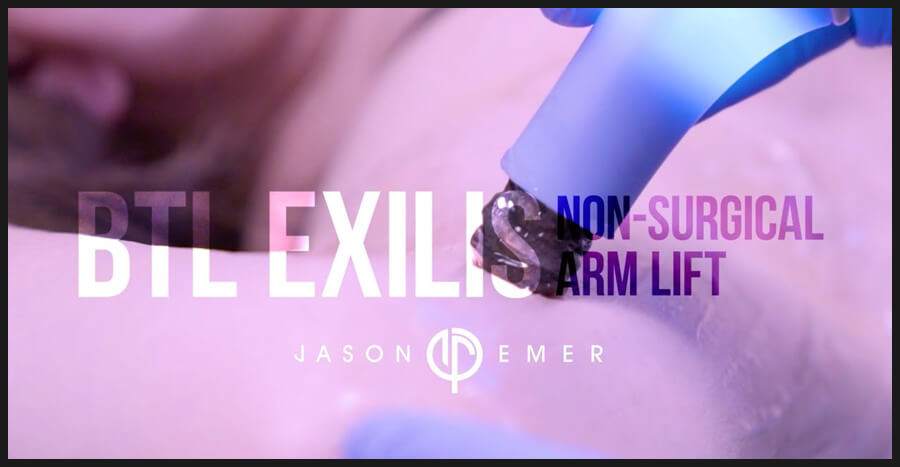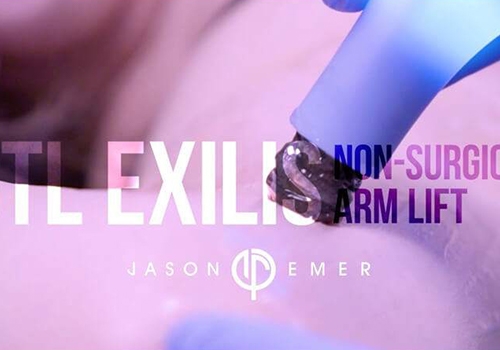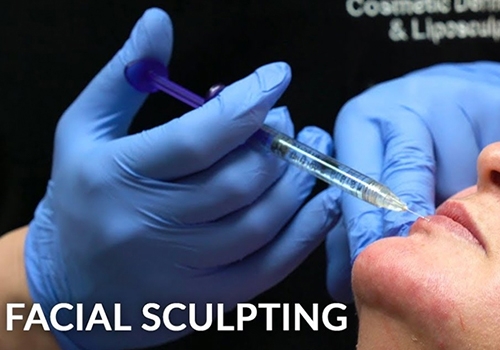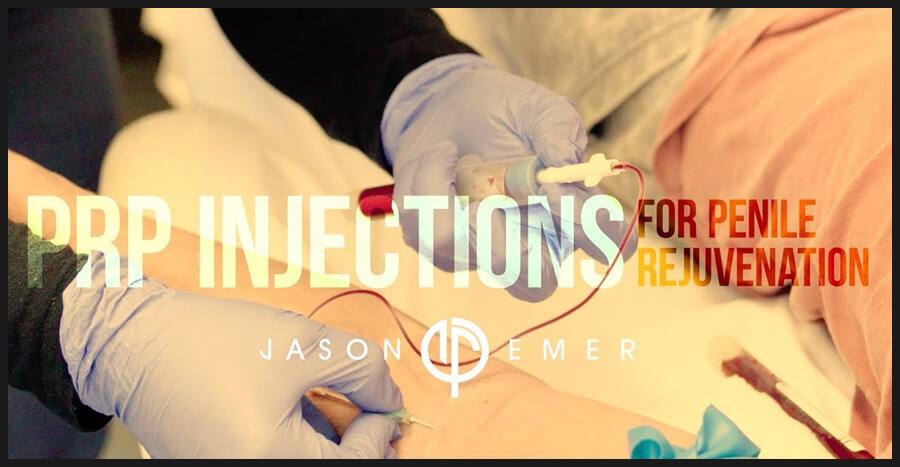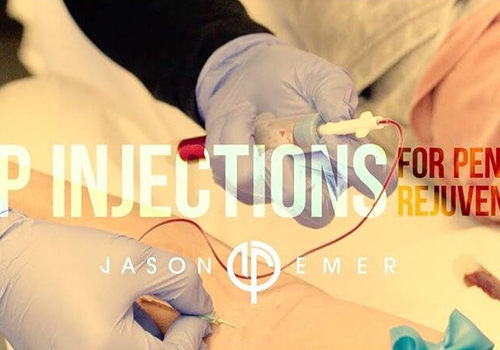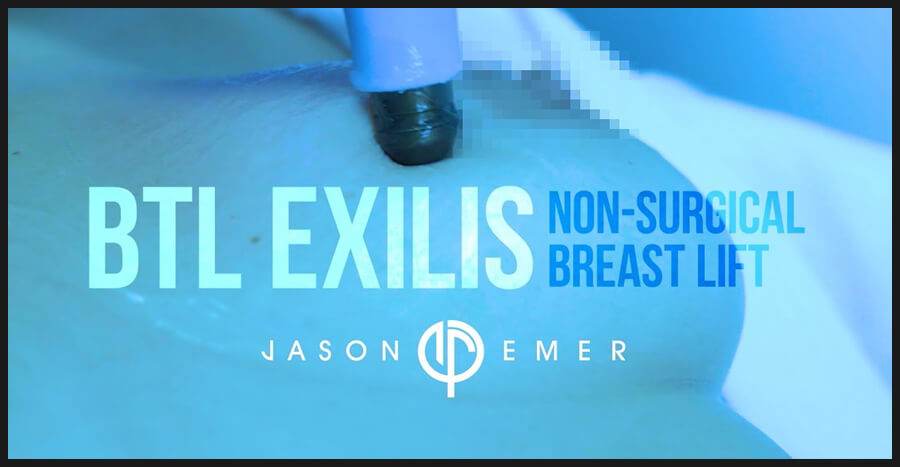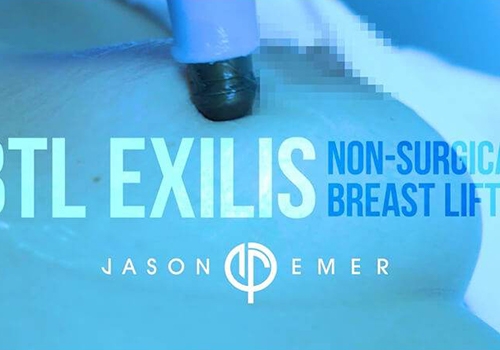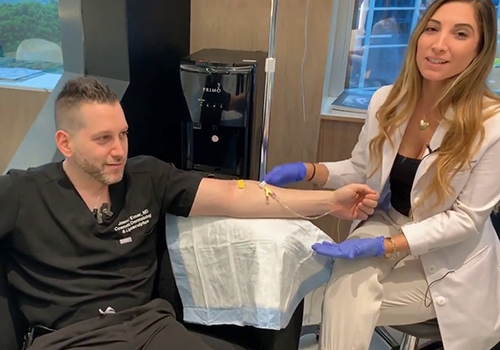TRAPTOX
Conveniently located to serve Beverly Hills, Hollywood, Los Angeles, NYC, and Miami.
Traptox is an injectable treatment that improves the contours of the neck and shoulders and relieves tension in this area. Board-certified cosmetic dermatologist Dr. Jason Emer is a top provider of Traptox in West Hollywood. With his extensive experience with neuromodulator injections, as well as his sophisticated artistic eye, he is able to achieve remarkable results for his patients.
WHAT IS TRAPTOX?
Traptox treatments consist of neurotoxin injections into the trapezius muscle, or “traps” to temporarily stop the muscle from contracting in order to alleviate cosmetic concerns and/or physical pain. Traptox is also referred to as trapezius Botox, shoulder slimming Botox, shoulder Botox, and trap Botox.
The trapezius muscle has a triangular shape and is located on the back of the neck and shoulders.
Most often, Traptox is performed to provide cosmetic enhancement by making the traps less prominent. Overdeveloped traps make the shoulders appear larger, which is considered a desirable masculine trait.
However, enlarged traps are often an aesthetic concern for women who prefer a more feminine look for themselves. Traptox is an effective method of reducing the size of the traps to give the shoulders and neck a more elegant, slimmer appearance.

In addition to cosmetic benefits, Traptox can provide relief from physical discomfort in the shoulders and neck, as well as tension headaches. Overactive traps are often the culprit when it comes to chronic pain throughout the neck and shoulders. Relaxing these muscles can often dramatically reduce the frequency and intensity of associated headaches and muscular tension.
RIGHT FOR YOU?
AM I A CANDIDATE FOR TRAPTOX?
A consultation with Dr. Emer is the best way to find out if you are a good candidate for trapezius Botox®. During your consultation for Traptox in West Hollywood, Dr. Emer will physically examine the upper back and neck and speak with you about your goals for Traptox. He will also conduct a review of your pertinent medical information to ensure that you do not have any allergies or underlying medical conditions that would make Traptox an unsuitable option for you.
If you are unhappy with your appearance due to overdeveloped trapezius muscles, Traptox may be an excellent treatment option for you.
Candidates can also be patients who have discomfort in the neck and/or shoulders, such as:
- Reduced range of motion in the neck and/or shoulders
- Muscle spasms
Stiff neck and/or upper back - Generalized upper back and neck pain
HOW DOES TRAPTOX WORK?
The cosmetic injectables used to perform Traptox are classified as neuromodulators. “Traptox” is a play on “trapezius” and “Botox®,” as Botox® is the most widely known injectable neuromodulator. However, Dr. Emer offers Traptox treatments with several FDA-approved neurotoxin injectables, to best accommodate the needs of his diverse patient base.
Though each has a distinct formulation, all of the following injectables contain the neurotoxin botulinum toxin type A as an active ingredient:
- Botox®
- Daxxify®
- Dysport®
- Jeuveau®
- Xeomin®
Botox® and similar injectable neuromodulators are predominantly used to smooth away frown lines, as well as furrows and creases across the forehead and other areas of the face. Traptox works to relax the trapezius muscle in the same way neuromodulators work to release dynamic facial wrinkles, which is by preventing muscles from contracting.
When injected into overactive muscles—whether they are the facial muscles we engage when frowning that cause visible “11” lines between the eyebrows or the trapezius muscle we tax when we spend 40 hours a week hunched over our desk—botulinum toxin type A stops the treated muscle from receiving signals from the nervous system that would initiate a contraction.
Consequently, the muscle is held in a state of relaxation for an extended period of time. When it comes to trap Botox and reducing trapezius muscle activity, not only does this relieve tension, but it stops the muscle from becoming stronger and bulkier. With ongoing treatments to keep the muscle in a controlled state of atrophy, the trapezius muscle will weaken, decreasing its size to create the appearance of a longer, more slender neck.
It is important to note that the effects of Botox®, Daxxify®, Dysport®, Jeuveau®, and Xeomin® are temporary and will gradually diminish. The body will naturally metabolize the injected product over the course of three to six months, and new neurotransmitters will be created to allow the treated muscle to become active again. Retreatment will be necessary to maintain results.
WHAT CAUSES ENLARGED TRAPS?
The trapezius muscle is integrally involved with neck and shoulder movements. Unwanted enlargement and tension can develop as a result of:
While overemphasizing trap exercises as part of a weightlifting routine is a fast track to enlarging these muscles, this is not typically the cause of overdeveloped traps and trapezius tension for most Traptox patients. Swimmers are prone to trapezius overactivity, and there are several everyday activities that can also contribute.
For example, holding a phone between your shoulder and ear strains the upper traps. Chronically disregarding form and ergonomics when lifting and carrying children or groceries can also activate the traps.
Patients who spend most of their day working on a computer are highly susceptible to unwanted changes in the shape and function of this muscle. Even when care is taken to make your workstation as ergonomic as possible, such as by raising the screen height and properly positioning your keyboard, there is a natural tendency for the head to come forward, causing us to hunch the shoulders.
When this type of poor posture is habitual, the trapezius muscle can shorten and become very tight. As a result, even when you attempt to pull the shoulders down and back and bring your neck into better alignment with the spine, you won’t see the slender, elongated lines associated with feminine upper body contours.
A common physiological response to stress is to tense the neck and shoulder muscles. If you are frequently stressed and have not found a stress management approach to alleviate it, this may be a contributing factor to overactivity and discomfort in the upper back and neck.
PROCEDURE DETAILS
WHAT TO EXPECT DURING A TRAPTOX TREATMENT
Traptox injection sessions usually take 10 to 20 minutes and are performed in-office at Dr. Emer’s medical practices in West Hollywood, Miami, and New York. The first step of a Traptox procedure is for Dr. Emer to identify the optimal injection sites and determine the appropriate dose of Daxxify®, Dysport®, Jeuveau®, Xeomin®, or Botox® for your Traptox procedure. He will then perform the necessary injections using a fine needle.
Patients frequently describe feeling a pinching sensation with each injection that they can easily tolerate. However, if you are worried about discomfort during your trap Botox® treatment, a topical numbing solution can be applied before Dr. Emer begins your injections.
PROCEDURE DETAILS
WHAT TO EXPECT AFTER A TRAPTOX TREATMENT
Traptox does not require a significant recovery period, and most patients can resume their daily routine within a day or two. Mild tenderness or bruising at the injection sites can occur for a short time following neurotoxin injections.
It is important that you do not massage the trapezius muscle for 24-72 hours after Traptox. Rubbing or applying force to the traps during this time could cause the neurotoxin to migrate, which could compromise your results.
PROCEDURE DETAILS
WHEN WILL I NOTICE TRAPTOX RESULTS?
It usually takes between two and seven days to see initial results, depending on whether Daxxify®, Dysport®, Jeuveau®, Xeomin®, or Botox® is injected and on your body’s unique response to the neurotoxin. However, it can take up to two weeks to see the full effect of neurotoxin injections.
Many patients experience faster results with Dysport® and Daxxify®. Patients often report improvements within 24 hours of Dysport® injections and within 48 hours of Daxxify® injections. In contrast, it can take three to five days to begin to see results after injections of Botox®, Jeuveau®, and Xeomin®
PROCEDURE DETAILS
IS TRAPTOX SAFE?
When trapezius neurotoxin injections are administered by a trained and experienced medical professional like Dr. Emer, Traptox is a safe treatment option for the vast majority of healthy adults. With Dr. Emer’s advanced knowledge of human anatomy and his refined injection technique, he is highly qualified to provide Traptox treatments. Additionally, Dr. Emer only uses FDA-approved neuromodulators, which include Botox®, Daxxify®, Dysport®, Jeuveau®, and Xeomin®.
PROCEDURE DETAILS
HOW LONG DO TRAPTOX RESULTS LAST?
The effects of Traptox can last up to six months, depending on the specific neuromodulator used, your metabolism, and other factors. Daxxify® is considered the longest-lasting neuromodulator, providing results that last six months, on average. Botox®, Dysport®, Jeuveau®, and Xeomin® typically wear off after about three to four months.
To enjoy consistent, long-term improvements, follow-up injection sessions can be scheduled at regular intervals. Dr. Emer can provide personalized recommendations regarding the right retreatment schedule for you.
PROCEDURE DETAILS
CAN TRAPTOX BE COMBINED WITH ADDITIONAL COSMETIC PROCEDURES?
Dr. Emer frequently combines Traptox with complementary cosmetic treatments to ensure natural-looking final results. Depending on your anatomy and overall aesthetic goals, your Traptox treatment plan may include one or more additional procedures for:
- Skin resurfacing – Laser devices, radiofrequency (RF) devices, chemical peels, or other methods may be used to kickstart collagen production, lift unwanted pigmentation, minimize fine lines and other signs of aging, and restore more vibrant, youthful-looking skin across the face, neck, and chest.
- Skin tightening – Tightening skin in the lower face and neck areas can complement the effects of Traptox. Mild skin laxity can be treated with external energy-based treatments like Ultherapy and Thermage. For moderate skin laxity, a minimally invasive procedure involving internally delivered RF energy with Renuvion or FaceTite may be ideal.
- Jawline contouring – A well-shaped, proportionate, and well-defined jaw can significantly enhance the effects of Traptox. Non-surgical jawline contouring treatments include Masseter Botox® to create a narrower jaw, Kybella® to get rid of a double chin, and PDO thread lifting to target jowls and minimize wrinkles and folds in the lower face.
ALTERNATIVE NECK AND SHOULDER CONTOURING TREATMENTS
Some patients are not ideal candidates for Traptox, so Dr. Emer will recommend an alternative neck and/or shoulder treatment. While a small number of patients are ineligible for Traptox due to certain allergies or medical conditions, alternative treatments are most often advised because a patient’s aesthetic concerns in the neck and upper back are not caused by overdeveloped traps.
Unwanted volume in the neck is often an issue of excess fat and/or skin, which cannot be addressed with Traptox. Further, correcting an imbalanced or disproportionate appearance across the shoulder, neck, and upper back areas is not always a matter of reducing volume. Instead, one or more of the following interventions may be necessary:
Submental fullness, or a double chin, is an issue of excess fat, rather than muscle. Kybella® is a cosmetic injectable that is FDA-approved to eliminate submental fat.
Neck lipo can be a good option for patients with greater amounts of unwanted fat in the neck area and those who prefer a one-time fat removal treatment over a series of Kybella® injection sessions. With neck lipo, Dr. Emer uses radiofrequency heat, ultrasound energy, or a carefully controlled stream of water using the BodyJet® system to loosen fat cells before extracting them with a medical suction device.
Also known as a Botox® neck lift, a Nefertiti Lift involves neuromodulator injections into the platysma muscles of the neck. When these muscles, which extend vertically between the collarbone and jawline, are overactive, they become visibly prominent, cause the neck to look aged, and pull the jawline downward, causing it to appear soft or undefined.
If there is considerable loose, sagging skin in the neck area and/or the platysma muscles are weak or damaged, neck lift surgery is likely the best approach. Neck lifts can involve repairing and altering neck muscles, surgical skin excision, and other techniques to restore smooth, youthful-looking neck contours.
More often in men than in women, the optimal way to create a balanced look in the neck and upper back is to build out the shoulders. Some patients naturally have narrow shoulders that can cause the traps to look overly large. Sometimes, due to genetics or other factors, it is difficult to increase muscle mass in the outer shoulders, no matter how much effort you put into your weightlifting routine. Procedures that can broaden the shoulders and add bulk include:
- Fat transfer – Fat transfer for shoulder augmentation requires liposuction to remove unwanted fat from another area of the body so it can be purified and then injected strategically into the deltoid area. Dr. Emer frequently incorporates fat transfer to the shoulders as part of his signature male body contouring treatment, Gladiator Lipo, which targets multiple concerns in a single procedure to deliver 360 degree, full-body sculpting.
- Deltoid implants – Specialized silicone implants can be surgically placed under the natural deltoid muscle to increase the mass of the shoulder and create the appearance of wider shoulders.
THE DR. EMER DIFFERENCE
HOW DR. EMER DOES TRAPTOX DIFFERENTLY
Dr. Emer is an internationally-acclaimed expert in the art of facial and body sculpting, as well as a leading authority in cosmetic dermatology. His exclusive combination treatments and passion for innovation have propelled the field of aesthetics forward and allow him to provide inimitably transformative, yet natural-looking cosmetic enhancement.
When it comes to Traptox for West Hollywood patients, as well as patients he treats at his satellite practice locations in Miami, and New York, meticulous customization and masterful injection technique are central to Dr. Emer’s high rates of patient satisfaction.

HOW MUCH DOES TRAPTOX COST?
Due to variances in each patient’s needs and aesthetic goals, the price of Traptox differs from one patient to another. The type of neuromodulator used and the number of units injected will impact the overall cost.
At Dr. Emer’s practices, Traptox financing is available through Alphaeon, Bankrate, CareCredit, Cherry, and Lending USA. Upon request, a member of our staff will be happy to assist you in finding a financing option that fits your budget.
FIND OUT IF TRAPTOX IS RIGHT FOR YOU
Though Traptox has been branded a beauty “craze” by some due to its rapid rise to viral status on social media platforms like TikTok, this minimally invasive neck and shoulder contouring treatment is far more than a passing trend. Offering both relief from physical discomfort and natural-looking cosmetic enhancement with virtually no downtime, Traptox is the treatment solution countless patients have been waiting for.
Dr. Emer is widely recognized as providing the best Traptox in West Hollywood, Beverly Hills, and the greater Los Angeles area. He is proud to include Traptox among available treatments at his practice locations in Miami, and New York, as well.

